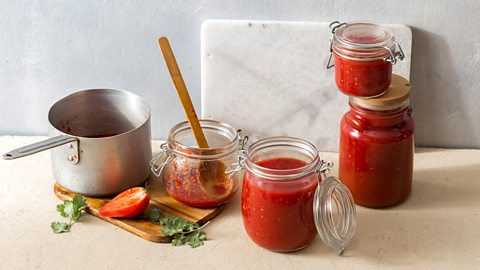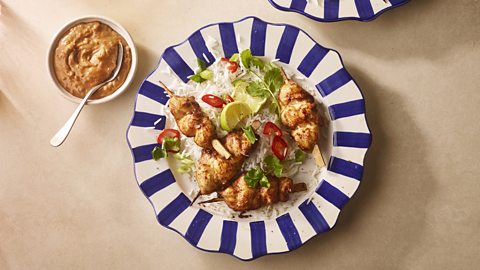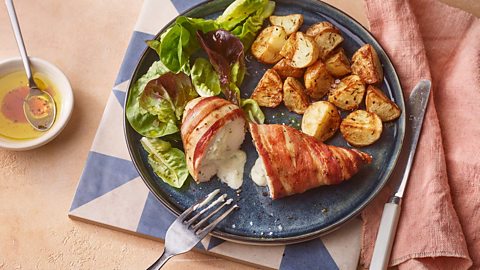What are the best foods to eat to relieve constipation?
If you’re struggling to relieve your symptoms, dietary changes could make a difference…
By Priya Tew

If you’ve ever had constipation, you know just how uncomfortable it can be. Stomach aches that refuse to shift and constant bloating are common complaints.
There are many causes, including certain medications and illnesses, pelvic floor problems, a lack of physical activity, anxiety, dehydration and dietary triggers.
Given the large number of causes of constipation, it’s unsurprising that it’s so common.
Research suggests 1 in 7 adults or 15% of people report suffering from it and the figures are commonly higher in children and older adults.
But how could your diet help? Here’s everything you need to know.
How can changing my diet help relieve constipation?
While diet is not constipation’s only cause or treatment, it can make a substantial difference for some sufferers, so it is worth exploring.
Fibre
Fibre is a key nutrient in managing constipation. The dietary recommendation is 30g per day and most of us – 91% in fact – aren’t eating enough. However, fibre is quite a complex nutrient and there are different types, which have different effects.
Your first step is to do a fibre audit. How many fibre-rich foods do you eat?
Fibre is found in wholegrains including wholemeal breads, rice, pasta, grains, breakfast cereals and oats. It is also found in fruit and vegetables (especially the skins), nuts, seeds, lentils, beans and pulses.
Quick vegetable pasta
This dish contains both vegetables and whole wheat pasta so is a great high-fibre dish

If you do not eat very much fibre, try increasing it, but be sure to up your fluid intake too. If you already eat a lot of fibre-rich foods, then you may need to alter or even reduce them. It’s worth speaking to a dietitian about this.
Focus on a diverse range of fibre including fruit, vegetables, nuts, seeds, lentils, beans and pulses. These can be incorporated into your usual meals and snacks. For example, try mixing beans into a casserole or making a lentil soup for lunch.
Wholegrains like oats, quinoa, couscous, brown rice, wholemeal bread and wholegrain cereals can add bulk to your stools. So, you need the right amount of these, but not too much!
If you have too many high-fibre foods including bran, these can actually cause constipation. So try switching your bran-based cereal for oats which can have a softening effect. Adding linseeds or chia seeds to your cereal or yoghurt can help soften stools too. Start with one tablespoon and always have these with fluid as they swell in your stomach.
Smoothie bowl
With chia seeds and oats, this smoothie bowl is a great fibre-rich way to start your day
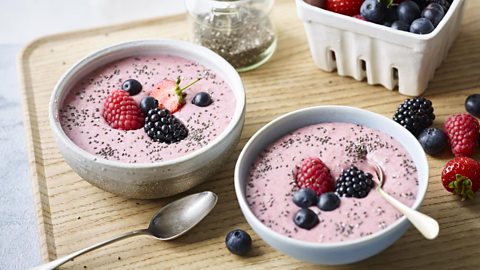
Other foods to try
There are some specific foods that can have an impact on your constipation. For example, prunes can have a natural laxative effect and eating two gold kiwi fruits a day (skin on) has been shown to help decrease straining.
Fibre supplement psyllium husk can be helpful for some people, too.
Probiotics are sometimes mentioned as helpful for constipation. The issue here is that you need the probiotic with the right bacterial strain in it. Just taking any old probiotic that you pick up in the shop is not likely to be helpful, so this is something to check with a health care professional.
Muesli
This muesli contains prunes which have a natural laxative effect
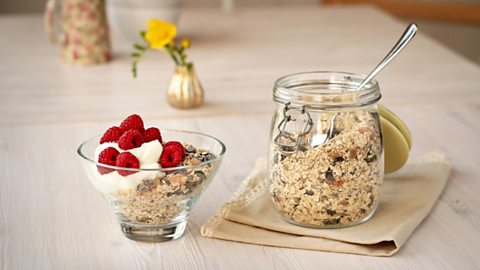
Hydration
Keeping hydrated is a key part of helping with constipation. Aim for 8–10 cups a day of water, weak squash, herbal teas or clear soup to soften stools. Limit alcohol and caffeine. A good plan is to aim for a glass of water with each meal.
Other ways to help ease your constipation
Another key area to focus on is how you go to the toilet. Having something under your feet – like a stool – can help your body be in the best position, with your knees higher than your hips.
Lean forward in a semi-squat position and try to breathe and relax before trying to pass a stool. For most people, there is a particular time of day that works best. It’s worth only trying for a maximum of 10 minutes – if you cannot empty your bowels in that time then come back later.
How do I know if I am constipated?
At its simplest, constipation means you are not able to pass stools regularly or comfortably. It’s sometimes known as a ‘functional disorder of the gastrointestinal tract,’ which means there’s not any physical damage that can be seen in the gut, but this does not mean it’s not a real issue.
Common symptoms include infrequent bowel movements, hard, lumpy stools and straining when passing a stool. But in chronic constipation there can also be diarrhoea, due to watery stools leaking out around a constipated stuck stool.
Early or milder symptoms of constipation include:
- A decrease in bowel movements, to less than three a week
- Discomfort and straining when passing a stool
- Hard ‘rabbit dropping’ style stools or dry and lumpy stools. For a visual guide check the Bristol Stool chart. Constipated stools are number one and two
- Incomplete evacuation – this feels like you have not completely emptied your bowels
- Tummy pain, bloating and feeling sluggish
Severe constipation can cause even more serious symptoms and complications including:
- Haemorrhoids (also known as piles) and a weakening of the rectum muscles from the straining
- A swollen, hard tummy and loss of appetite
- Overflow diarrhoea which is a very liquid diarrhoea that is not controllable
- Headaches, confusion and feeling restless
Droppings or smooth sausages, what's a healthy poo?
Constipation is a common issue that can be very uncomfortable. While there are dietary treatments that you can try, it is always worth seeking medical advice. Constipation can have many other causes and can become severe if it is not treated.
Originally published March 2025
Want more? Visit BBC Food on Instagram, Facebook and Pinterest. Want to watch the latest Food TV programmes? Visit BBC iPlayer.
